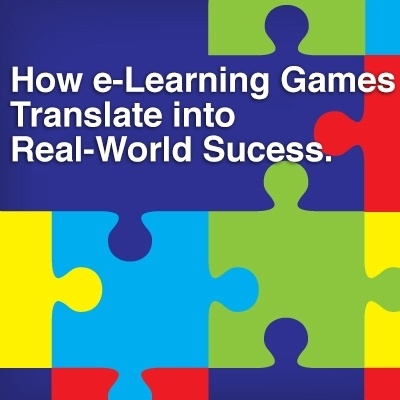eLearning Games And Apps That Make Students Think Out Of The Box
Most people think, for example, that phonics games can be used to teach early educational students how to become better writers. They may also think of mobile apps that parents purchase to get their preschoolers started on the basics of math, writing, reading, and other skills needed in the early years of school. It can be difficult to imagine kids in middle school or beyond having an interest in eLearning games and apps, and even more difficult to imagine there being a worthwhile selection of these apps available. However, as it turns out, there are a few very good eLearning games and apps that do appeal to older learners.
- Brain Trainer.
Brain Trainer isn’t just a single game. It is an entire suite of educational games that have been designed to give the student’s brain a workout. This app contains games that boost math skills, strengthen memory, and improve speed. The app includes complex shape and color identification challenges, word games such as Sudoku, Math Ninja, and more. There are plenty of activities available to make it useful to students over a long period of time. - Lumosity.
Lumosity is a website based educational suite that students, and others, can use to improve memory, increase their problem solving skills, think quickly, increase their attention span, and make their brains more flexible. Once the student has registered, they can take an online assessment, take a course, or play a game. The courses and games that are available depend on the specific area of cognition the student chooses to work on. It should be noted that while it is an absolutely creative and effective learning website, Lumosity definitely presents itself as a learning app. There are games involved, but not all students will want to work through them. - SpaceChem.
SpaceChem may be educational, but let’s be honest; its real appeal to teenagers is that it plays like an actual video game. The game type of SpaceChem is puzzle, and it is based on the principles of chemistry. More specifically, it uses the concept of chemical bonding as one of its core elements. Game players are tasked with the job of creating specific molecules or combinations of molecules from the atoms and molecules that are provided to them. They do this by using a visual programming language to get “Waldos” to perform specific actions. As the player’s level increases, the tasks they must perform become more and more complex. - SimplePhysics.
SimplePhysics is a wonderful app for any student with an interest in architecture, civil engineering, physics, or the construction trades. It does a great job of helping students to apply and understand the principles of physics in a relatable way as they work to design and construct buildings and various other structures that they then test against a variety of conditions. This is an especially well-suited game for students who are better able to understand scientific principles when they see them applied in real world situations. This is definitely a challenging game, but there is a tutorial provided to get kids started. - Spore Origins.
DNA and evolution are complex things. Who knew that one of the best ways that students could learn about and master these concepts would be through a video game? Spore Origins is a game in which students can harvest DNA from a variety of sources, create new organisms, and then feed those organisms and keep them alive. Ultimately, the goal is to build a singular organism, which is you (this is a ‘first person shooter’). As they are attempting to evolve, students face the challenges of fighting with other organisms. Fortunately, there are symbiotes that provide players with certain protections. This game becomes more interesting and complex as the levels increase, and it is an excellent, stylistic portrayal of the principle of survival of the fittest. - Presidents Vs. Aliens.
Think Angry Birds meets history lesson, and you probably have a good idea of how fun and addictive this game is. In fact, students may forget they are getting an education on American history. Here is how Presidents Vs. Aliens works: The student is presented with the picture of a United States. Then, they are quizzed about that president’s biographical information. This includes, what events happened during each presidency, a quote that the president is known for, the president’s political party, and even familiar quotes. When the student is able to satisfactorily answer all questions, they can then take the president’s head and hurl it at the aliens and then knock them off of the screen. This game is fun, addictive, and suitable for an age range from late elementary school into early college. Memorizing historical facts can be a drag, this educational app makes that just a little bit easier. - Psychobabble.
Although this may not be the most sensitively named educational game there is, Psychobabble is a great way to teach students good writing skills, and improve on their vocabularies. The premise is that the player is on the psychiatrist’s couch participating in a word association session. The game begins, like word associations do with the shrink saying a word, and the student answering or selecting which word comes next. However, as the words begin to flow more freely and rapidly, the student must continue to find the right word combinations. However, as the game progresses, it becomes more than an exercise in word association. Puns, jokes, and word patterns also emerge.
Conclusion
Video games and eLearning games and apps should absolutely not be discounted when it comes to getting teens and adolescents focused on adulthood. However, it should be noted that the games that really do hit the mark with teens and other students are those that may not meet the criteria of traditional educational apps, but manage to combine educational elements, with high quality graphics, smart writing and direction, and realistic game play.








